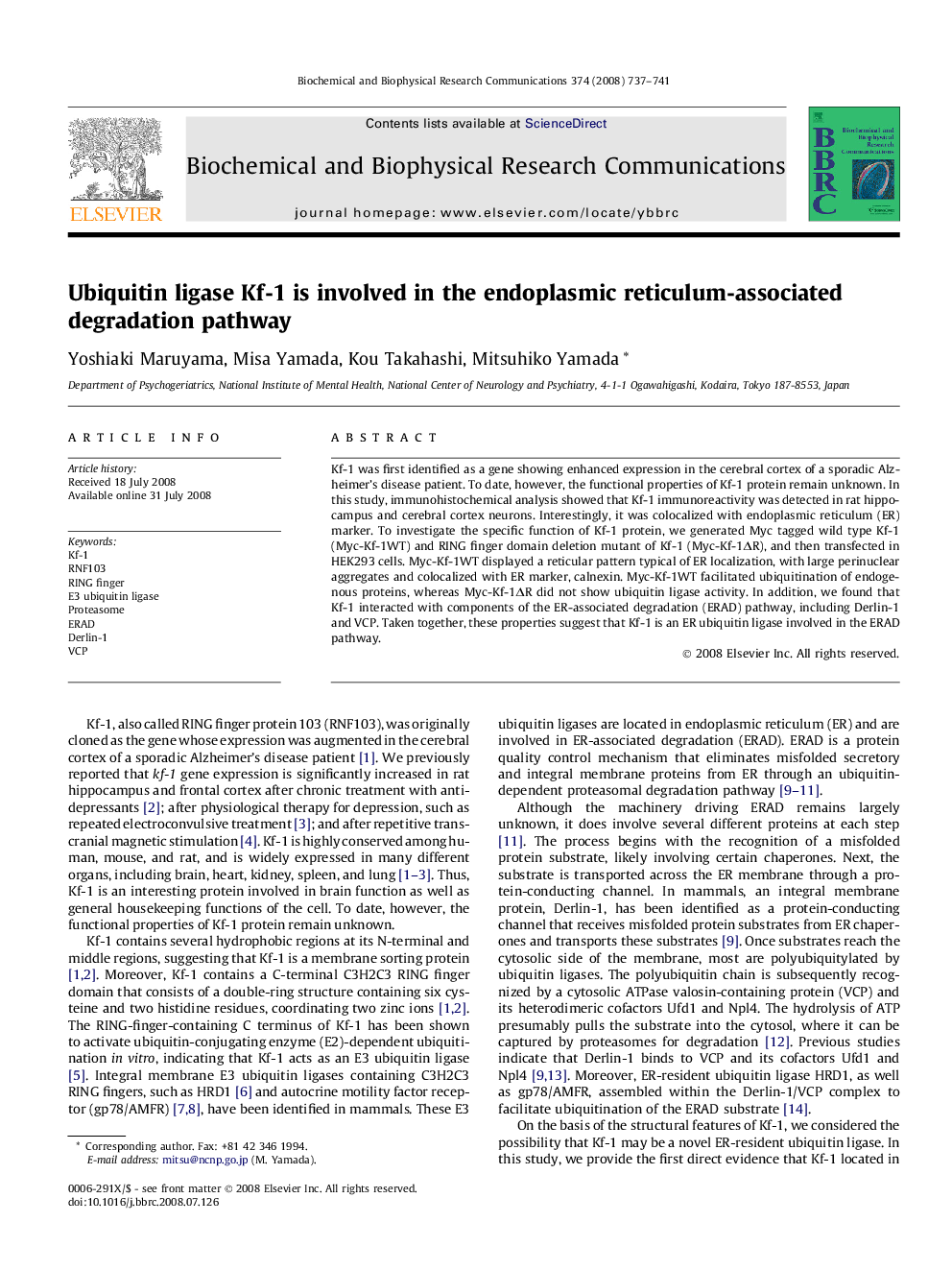| کد مقاله | کد نشریه | سال انتشار | مقاله انگلیسی | نسخه تمام متن |
|---|---|---|---|---|
| 1935036 | 1050656 | 2008 | 5 صفحه PDF | دانلود رایگان |

Kf-1 was first identified as a gene showing enhanced expression in the cerebral cortex of a sporadic Alzheimer’s disease patient. To date, however, the functional properties of Kf-1 protein remain unknown. In this study, immunohistochemical analysis showed that Kf-1 immunoreactivity was detected in rat hippocampus and cerebral cortex neurons. Interestingly, it was colocalized with endoplasmic reticulum (ER) marker. To investigate the specific function of Kf-1 protein, we generated Myc tagged wild type Kf-1 (Myc-Kf-1WT) and RING finger domain deletion mutant of Kf-1 (Myc-Kf-1ΔR), and then transfected in HEK293 cells. Myc-Kf-1WT displayed a reticular pattern typical of ER localization, with large perinuclear aggregates and colocalized with ER marker, calnexin. Myc-Kf-1WT facilitated ubiquitination of endogenous proteins, whereas Myc-Kf-1ΔR did not show ubiquitin ligase activity. In addition, we found that Kf-1 interacted with components of the ER-associated degradation (ERAD) pathway, including Derlin-1 and VCP. Taken together, these properties suggest that Kf-1 is an ER ubiquitin ligase involved in the ERAD pathway.
Journal: Biochemical and Biophysical Research Communications - Volume 374, Issue 4, 3 October 2008, Pages 737–741